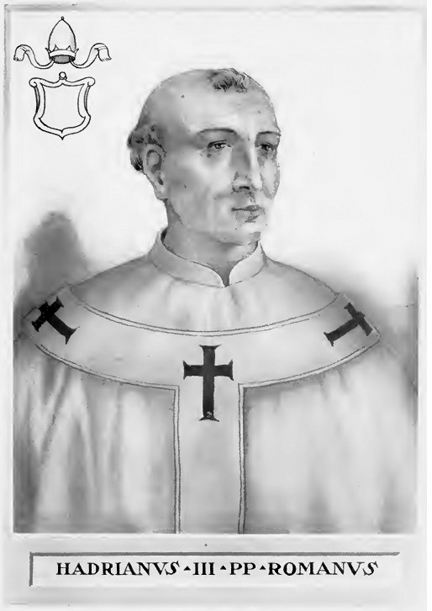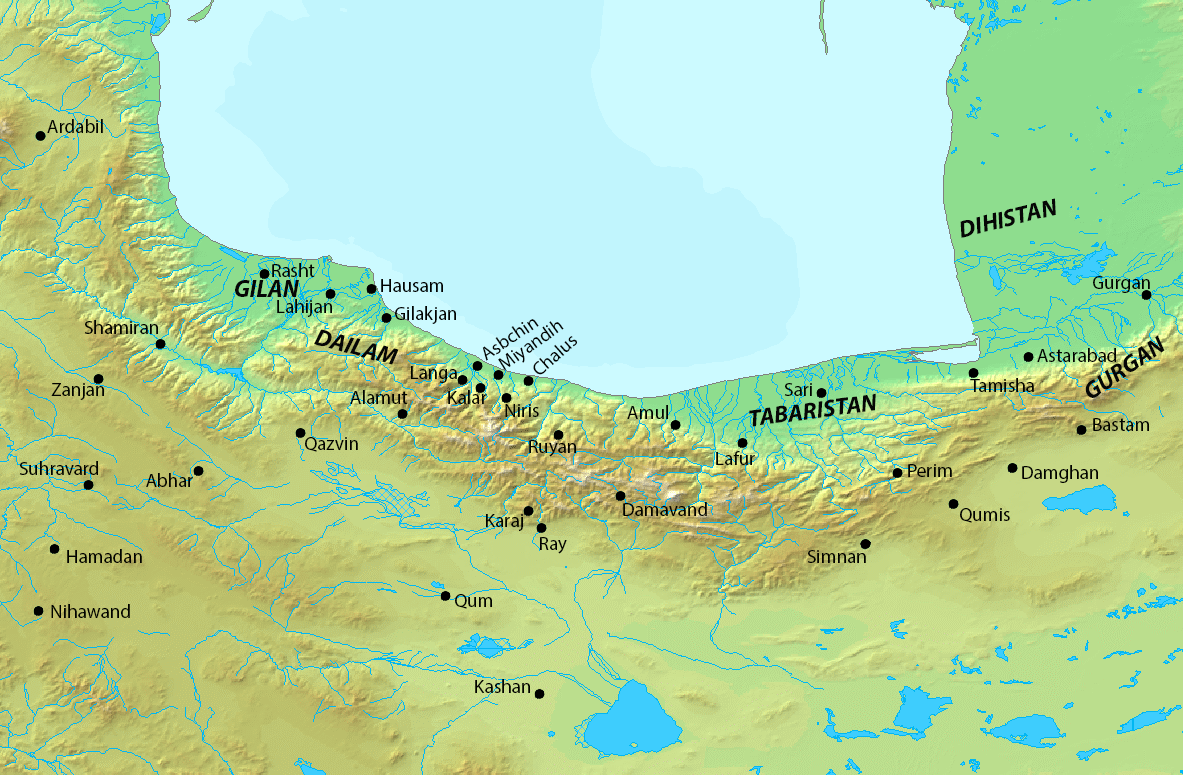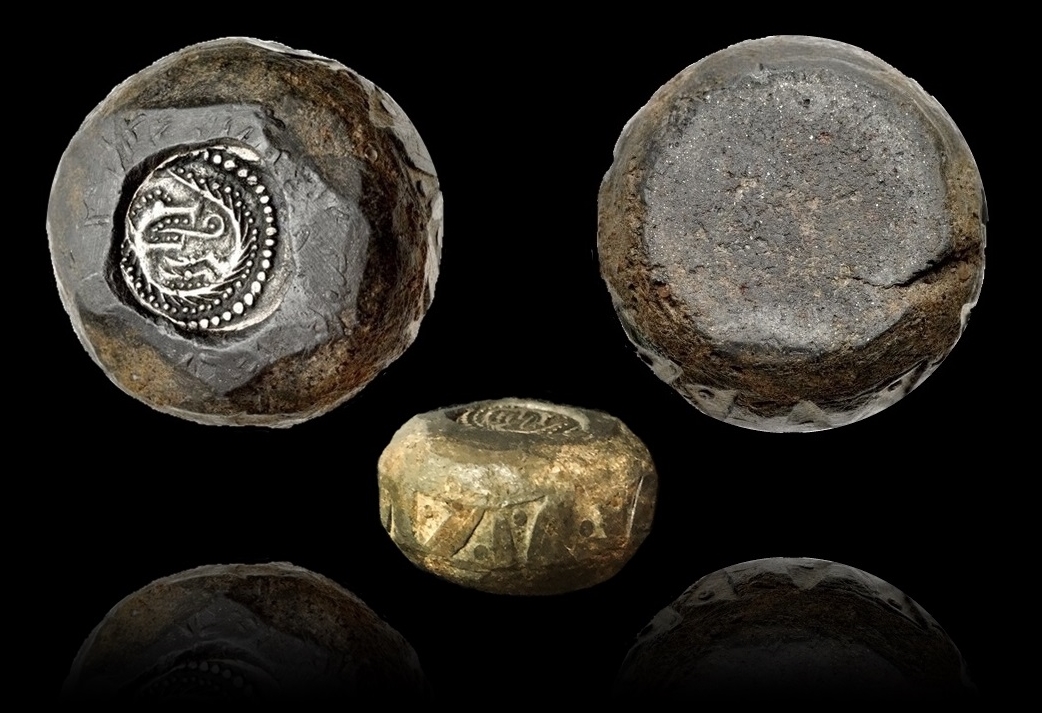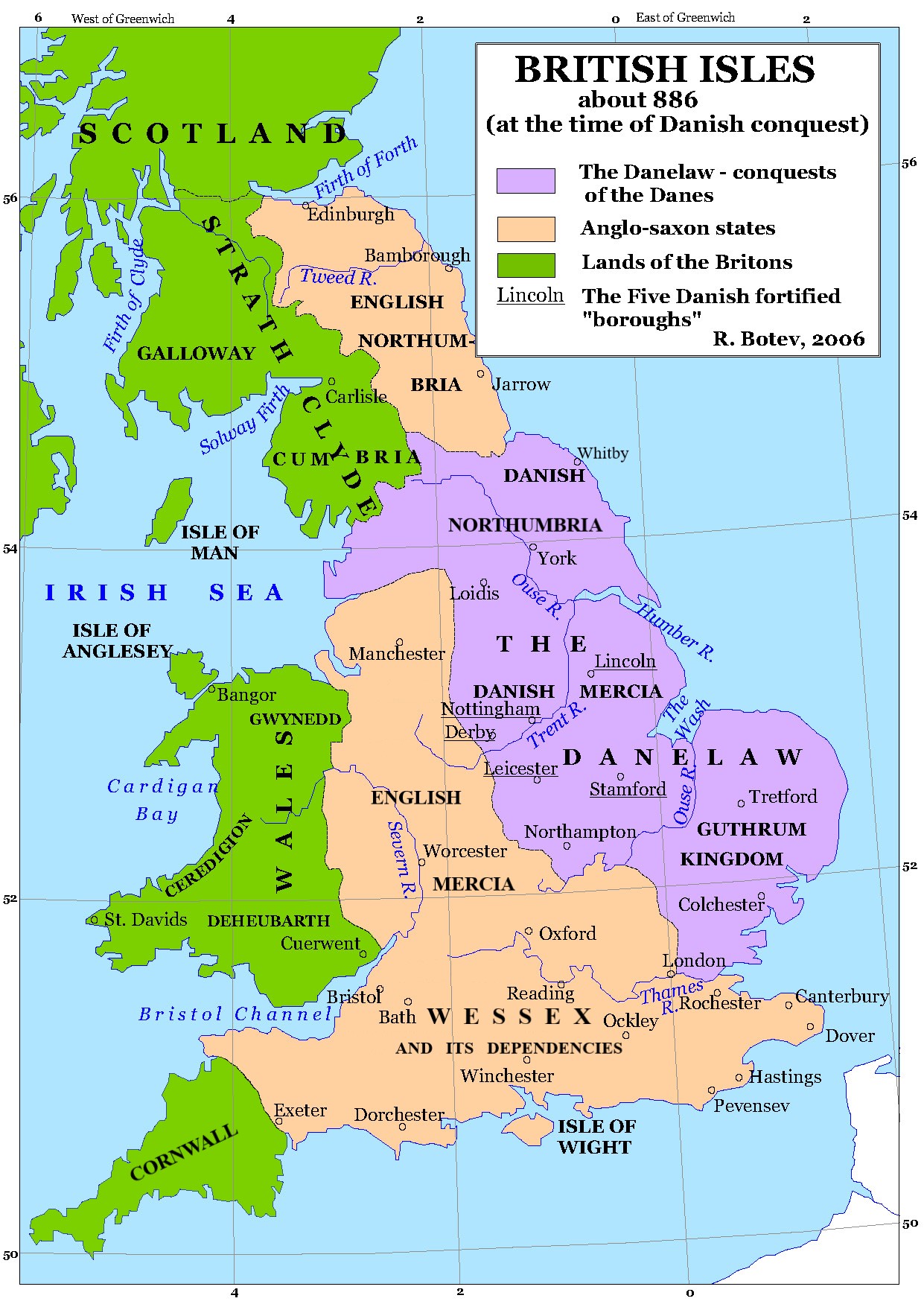|
884 Deaths
__NOTOC__ Year 884 ( DCCCLXXXIV) was a leap year starting on Wednesday of the Julian calendar. Events By place Europe * March 1 – Diego RodrГguez Porcelos, count of Castile, founds and repopulates (''repoblaciГіn'') Burgos and Ubierna (Northern Spain), under the mandate of King Alfonso III of Asturias. * Summer – King Carloman II reverts to the former fall-back of 'pay and pray', buying (with Danegeld) a truce at Amiens, while he raises 12,000 lbs of silver for the Vikings to depart. * December 12 – Carloman II dies after a hunting accident. He is succeeded by his cousin, Emperor Charles the Fat, who for the last time reunites the Frankish Empire. Britain * King Г†thelred II of Mercia marries Princess Г†thelflГ¦d, daughter of King Alfred the Great. He accepts Wessex overlordship, and demotes himself to become "Lord of the Mercians". Arabian Empire * January 6 – Hasan ibn Zayd, founder of the Zaydid Dynasty, dies after a 20-year reign ... [...More Info...] [...Related Items...] OR: [Wikipedia] [Google] [Baidu] |
Pope Adrian III
Pope Adrian III or Hadrian III ( or ''Hadrianus''; died 8 July 885) was the bishop of Rome and ruler of the Papal States from 17 May 884 to his death on 8 July 885. He served for little more than a year, during which he worked to help the people of Italy in a very troubled time of famine and war. Background Adrian III was born in Rome. According to Jean Mabillon, his birth name was Agapitus. Reginald L. Poole believes that Mabillon confused Adrian III, who succeeded Marinus I, with Agapetus II, who succeeded Marinus II a century later. Pontificate Adrian laboured hard to alleviate the misery of the people of Italy, prey to famine and to continuous war. He is also known to have written a letter condemning the Christians of both Muslim-ruled and Christian-ruled parts of Spain for being too friendly with the Jews in these lands. Adrian also sent Theodosius, the bishop of Brindisi and Oria, to Constantinople to deliver a synodal letter about faith and the filioque to patriarc ... [...More Info...] [...Related Items...] OR: [Wikipedia] [Google] [Baidu] |
December 12
Events Pre-1600 * 627 – Battle of Nineveh: A Byzantine army under Emperor Heraclius defeats Emperor Khosrau II's Persian forces, commanded by General Rhahzadh. * 1388 – Maria of Enghien sells the lordship of Argos and Nauplia to the Republic of Venice. 1601–1900 * 1787 – Pennsylvania becomes the second state to ratify the US Constitution. *1862 – American Civil War: sinks on the Yazoo River. *1866 – Oaks explosion: The worst mining disaster in England kills 361 miners and rescuers. *1870 – Joseph H. Rainey of South Carolina becomes the second black U.S. congressman. 1901–present * 1901 – Guglielmo Marconi receives the first transatlantic radio signal (the letter "S" ��••in Morse Code), at Signal Hill in St John's, Newfoundland. * 1915 – Yuan Shikai declares the establishment of the Empire of China and proclaims himself Emperor. *1917 – Father Edward J. Flanagan founds Boys Town as a farm village for ... [...More Info...] [...Related Items...] OR: [Wikipedia] [Google] [Baidu] |
Muhammad Ibn Zayd
Abū ʿAbd Allāh Muḥammad ibn Zayd ibn Muḥammad ibn Ismaʿīl ibn al-Ḥasan ibn Zayd (died 3 October 900), also known as ''al-Dāʿī al-Ṣaghīr'' ("the Younger Missionary"), was an Alid who succeeded his brother, Hasan ("the Elder Missionary"), as ruler of the Zaydid dynasty of Tabaristan in 884.. Little is known of his early life, before coming to Tabaristan after Hasan established Zaydid rule there in 864. He served his brother as a general and governor, and continued his policies after his accession. His reign was troubled by rebellions and wars, most notably by the invasion of Rafi' ibn Harthama in 889–892, which occupied most of his domains. After Rafi' fell out of favour with the Abbasids, Muhammad recovered his position and secured the allegiance of Rafi', but did not particularly support him against the Saffarids. In 900, following the Saffarids' defeat by the Samanids, he tried to invade Khurasan, but was defeated and died of his wounds, whereupon Tabarist ... [...More Info...] [...Related Items...] OR: [Wikipedia] [Google] [Baidu] |
Amol
Amol ( ; ) is a city in the Central District (Amol County), Central District of Amol County, Mazandaran province, Mazandaran province, Iran, serving as capital of both the county and the district. Amol is located on the Haraz River bank. It is situated less than south of the Caspian Sea and less than north of the Alborz mountains. It is northeast of Tehran, and west of the provincial capital, Sari, Iran, Sari. It is one of the oldest cities in Iran, and a historic city, with its foundation dating back to the Amardi tribe, who inhabited the region in the Iron Age. Amol is the center of industry and culture of Mazandaran, the rice capital of Iran, and one of the most important cities of the transportation, agriculture, and tourism industries in Iran. It is known as the ''History, Science and Philosophy city'', ''City that does not die'' and ''Hezar Sangar city''. History Pre-Islamic era According to the city government, the name is derived from ''Amardi'', a tribe mentioned ... [...More Info...] [...Related Items...] OR: [Wikipedia] [Google] [Baidu] |
Alid Dynasties Of Northern Iran
Alid dynasties of northern Iran or Alavids (). In the 9th–10th centuries, the northern Iranian regions of Tabaristan, Daylam and Gilan, sandwiched between the Caspian Sea and the Alborz range, came under the rule of a number of Arab Alid dynasties, espousing the Zaydi branch of Shia Islam. The first and most powerful Zaydi emirate was established in Tabaristan in 864 and lasted until 928. It was interrupted by Samanid occupation in 900, but restored in 914 by another Alid branch. The second period of the Alid emirate was plagued by internal dissensions and power struggles between the two branches, and ended in the second conquest of the region by the Samanids in 928. Subsequently, some of the soldiers and generals of the Alavids joined the Samanids, among them Mardavij, founder of the Ziyarid dynasty, and the three sons of Buya ( Ali, Hassan and Ahmad), founders of the Buyid dynasty. Local Zaydi rulers survived in Daylam and Gilan until the 16th century. List of Zaydi emir ... [...More Info...] [...Related Items...] OR: [Wikipedia] [Google] [Baidu] |
Hasan Ibn Zayd
Abū Muḥammad al-Ḥasan ibn Zayd ibn Muḥammad ibn Ismaʿīl ibn al-Ḥasan ibn Zayd (; died 6 January 884), also known as ''al-Dāʿī al-Kabīr'' (, "the Great/Elder Missionary"), was an Alid who became the founder of the Zaydid dynasty of Tabaristan. Biography ''Al-Ḥasan'' was a descendant of Hasan ibn Zayd ibn Hasan, a great-grandson of Ali, the son-in-law of Muhammad and fourth Caliph.Buhl (1971), p. 245 In 864, he was living at Rayy in northern Iran, when he was invited by pro- Alid elements in the neighbouring province of Tabaristan to join them in an uprising against the Abbasid authorities. Tabaristan, a mountainous region on the southern shore of the Caspian Sea, had remained largely untouched by the Muslim conquests of the 7th century. Until conquered by the Abbasid Caliphate in 759/60, it had been ruled by a native Iranian dynasty of Caspian origins, the Dabuyids, and even after the imposition of direct Muslim rule local dynasties retained a large measu ... [...More Info...] [...Related Items...] OR: [Wikipedia] [Google] [Baidu] |
January 6
Events Pre-1600 * 1066 – Following the death of Edward the Confessor on the previous day, the Witan meets to confirm Harold Godwinson as the new King of England; Harold is crowned the same day, sparking a succession crisis that will eventually lead to the Norman conquest of England. * 1205 – Philip of Swabia undergoes a second coronation as King of the Romans. * 1322 – Stephen UroЕЎ III is crowned King of Serbia, having defeated his half-brother Stefan Konstantin in battle. His son is crowned "young king" in the same ceremony. * 1355 – Charles IV of Bohemia is crowned with the Iron Crown of Lombardy as King of Italy in Milan. * 1449 – Constantine XI is crowned Byzantine Emperor at Mystras. * 1492 – The Catholic Monarchs Ferdinand and Isabella enter Granada at the conclusion of the Granada War. * 1536 – The first European school of higher learning in the Americas, Colegio de Santa Cruz de Tlatelolco, is founded by Vicero ... [...More Info...] [...Related Items...] OR: [Wikipedia] [Google] [Baidu] |
Mercia
Mercia (, was one of the principal kingdoms founded at the end of Sub-Roman Britain; the area was settled by Anglo-Saxons in an era called the Heptarchy. It was centred on the River Trent and its tributaries, in a region now known as the Midlands of England. The royal court moved around the kingdom without a fixed capital city. Early in its existence Repton seems to have been the location of an important royal estate. According to the ''Anglo-Saxon Chronicle'', it was from Repton in 873–874 that the Great Heathen Army deposed the King of Mercia. Slightly earlier, Offa of Mercia, King Offa seems to have favoured Tamworth, Staffordshire, Tamworth. It was there where he was crowned and spent many a Christmas. For the three centuries between 600 and 900, known as Mercian Supremacy or the "Golden Age of Mercia", having annexed or gained submissions from five of the other six kingdoms of the Heptarchy (Kingdom of East Anglia, East Anglia, Kingdom of Essex, Essex, Kingdom of Kent, K ... [...More Info...] [...Related Items...] OR: [Wikipedia] [Google] [Baidu] |
Wessex
The Kingdom of the West Saxons, also known as the Kingdom of Wessex, was an Anglo-Saxon Heptarchy, kingdom in the south of Great Britain, from around 519 until Alfred the Great declared himself as King of the Anglo-Saxons in 886. The Anglo-Saxons believed that Wessex was founded by Cerdic and Cynric of the Gewisse, though this is considered by some to be a legend. The two main sources for the history of Wessex are the West Saxon Genealogical Regnal List and the ''Anglo-Saxon Chronicle'' (the latter of which drew on and adapted an early version of the List), which sometimes conflict. Wessex became a Christianity, Christian kingdom after Cenwalh () was baptised and was expanded under his rule. Cædwalla later conquered Kingdom of Sussex, Sussex, Kingdom of Kent, Kent and the Isle of Wight. His successor, Ine of Wessex, Ine (), issued one of the oldest surviving English law codes and established a second West Saxon bishopric. The throne subsequently passed to a series of kings wit ... [...More Info...] [...Related Items...] OR: [Wikipedia] [Google] [Baidu] |
Alfred The Great
Alfred the Great ( ; – 26 October 899) was King of the West Saxons from 871 to 886, and King of the Anglo-Saxons from 886 until his death in 899. He was the youngest son of King Æthelwulf and his first wife Osburh, who both died when Alfred was young. Three of Alfred's brothers, Æthelbald, King of Wessex, Æthelbald, Æthelberht, King of Wessex, Æthelberht and Æthelred I of Wessex, Æthelred, reigned in turn before him. Under Alfred's rule, considerable administrative and military reforms were introduced, prompting lasting change in England. After ascending the throne, Alfred spent several years fighting Viking invasions. He won a decisive victory in the Battle of Edington in 878 and made an agreement with the Vikings, dividing England between Anglo-Saxon territory and the Viking-ruled Danelaw, composed of Scandinavian York, the north-east Midlands and East Anglia. Alfred also oversaw the conversion of Viking leader Guthrum to Christianity. He defended his kingdom again ... [...More Info...] [...Related Items...] OR: [Wikipedia] [Google] [Baidu] |
Æthelflæd
Æthelflæd ( – 12 June 918) ruled as Lady of the Mercians in the English Midlands from 911 until her death in 918. She was the eldest child of Alfred the Great, king of the Anglo-Saxon kingdom of Wessex, and his wife Ealhswith. Æthelflæd was born around 870 at the height of the Viking Age, Viking invasions of England in the Middle Ages, England. By 878, most of England was under Danish Viking rule – Kingdom of East Anglia, East Anglia and Northumbria having been conquered, and Mercia partitioned between the English and the Vikings – but in that year Alfred won a crucial victory at the Battle of Edington. Soon afterwards the English-controlled western half of Mercia came under the rule of Æthelred, Lord of the Mercians, who accepted Alfred's overlordship. Alfred adopted the title King of the Anglo-Saxons (previously he was titled King of the West Saxons like his predecessors) claiming to rule all Anglo-Saxon people not living in areas under Viking control. In the mid-8 ... [...More Info...] [...Related Items...] OR: [Wikipedia] [Google] [Baidu] |
Г†thelred, Lord Of The Mercians
Æthelred (died 911) became Lord of the Mercians in England shortly after the death or disappearance of Mercia's last king, Ceolwulf II, in 879. He is also sometimes called the Ealdorman of Mercia. Æthelred's rule was confined to the western half, as eastern Mercia was then part of the Viking-ruled Danelaw. His ancestry is unknown. He was probably the leader of an unsuccessful Mercian invasion of Wales in 881, and soon afterwards he acknowledged the lordship of King Alfred the Great of Wessex. This alliance was cemented by the marriage of Æthelred to Alfred's daughter Æthelflæd. In 886, Alfred took possession of London, which had suffered greatly from several Viking occupations. Alfred then handed London over to Æthelred, as it had traditionally been a Mercian town. In 892, the Vikings renewed their attacks, and the following year, Æthelred led an army of Mercians, West Saxons and Welsh to victory over a Viking army at the Battle of Buttington. He spent the next thre ... [...More Info...] [...Related Items...] OR: [Wikipedia] [Google] [Baidu] |






